October 7, 2025
at
6:00 pm
EST
MIN READ
Crypto spot trading: What is it and how to do it
Spot trading in crypto is when you buy or sell a crypto token, like Bitcoin, at the current price with no leverage and full rights to move, transfer and sell the underlying asset. When spot trading on an exchange, you buy the actual asset and then you can transfer that asset to any other exchange or wallet that you have.
Trading on the crypto spot market is a much simpler, beginner-friendly way of trading crypto. Spot traders buy an asset with the goal of the price going up. Spot traders lock in profit (or loss) only when they sell the asset.
How does spot trading work?
When you place a spot trade, you are exchanging one asset for another at the current market rate, also known as the spot price. The transaction settles instantly, or "on the spot." For example, if you buy Bitcoin with USDT, you are swapping your USDT for an equivalent value of Bitcoin at that moment. The asset is then transferred to your exchange wallet.
Market Order vs. Limit Order
When you enter or exit a trade, you use an order. The two most common types are:
- Market Order: An instruction to buy or sell immediately at the best available current price. This ensures your order is filled quickly, but the final price might be slightly different from what you expected due to "slippage".
- Limit Order: An instruction to buy or sell at a specific price. A buy limit order will only execute at your set price or lower, and a sell limit order will only execute at your set price or higher. This gives you control over the execution price, but there is no guarantee the order will be filled if the market never reaches your target price.
Key Trading Concepts Explained
- PNL (Profit and Loss): This shows the performance of your investment. In spot trading, it is the difference between the price you bought the asset at and the current market price (unrealized PNL) or the price you sold it at (realized PNL).
- Volume: This is the total amount of an asset traded over a specific period, such as 24 hours. High volume can indicate significant interest and liquidity for that asset.
Can I lose more than my initial investment in spot trading?
No. In spot trading, you cannot lose more than the capital you invested. If you buy $100 worth of a cryptocurrency, the maximum amount you can lose is your initial $100, which would only happen if the asset's price went to zero. Your account balance cannot go into a negative value from a spot trade.
Can I short in spot trading?
No, you cannot short in the traditional sense in spot trading. Shorting involves borrowing an asset to sell it, with the intention of buying it back later at a lower price. Spot trading only allows you to sell assets that you actually own in your wallet. Therefore, to profit from a price decrease in the spot market, you would need to have already sold the asset at a higher price and then repurchase it after the price has fallen. This is different from opening a short position on a futures or margin trading platform, where you can sell an asset without owning it beforehand.
Executing a Trade on Arkham Exchange
Placing a spot trade on an exchange generally follows these steps:
- Navigate to the Spot section.
- From the Arkham Exchange homepage, click ‘Trade’ in the navigation menu at the top and then click ‘Spot Trading’ from the drop-down list.
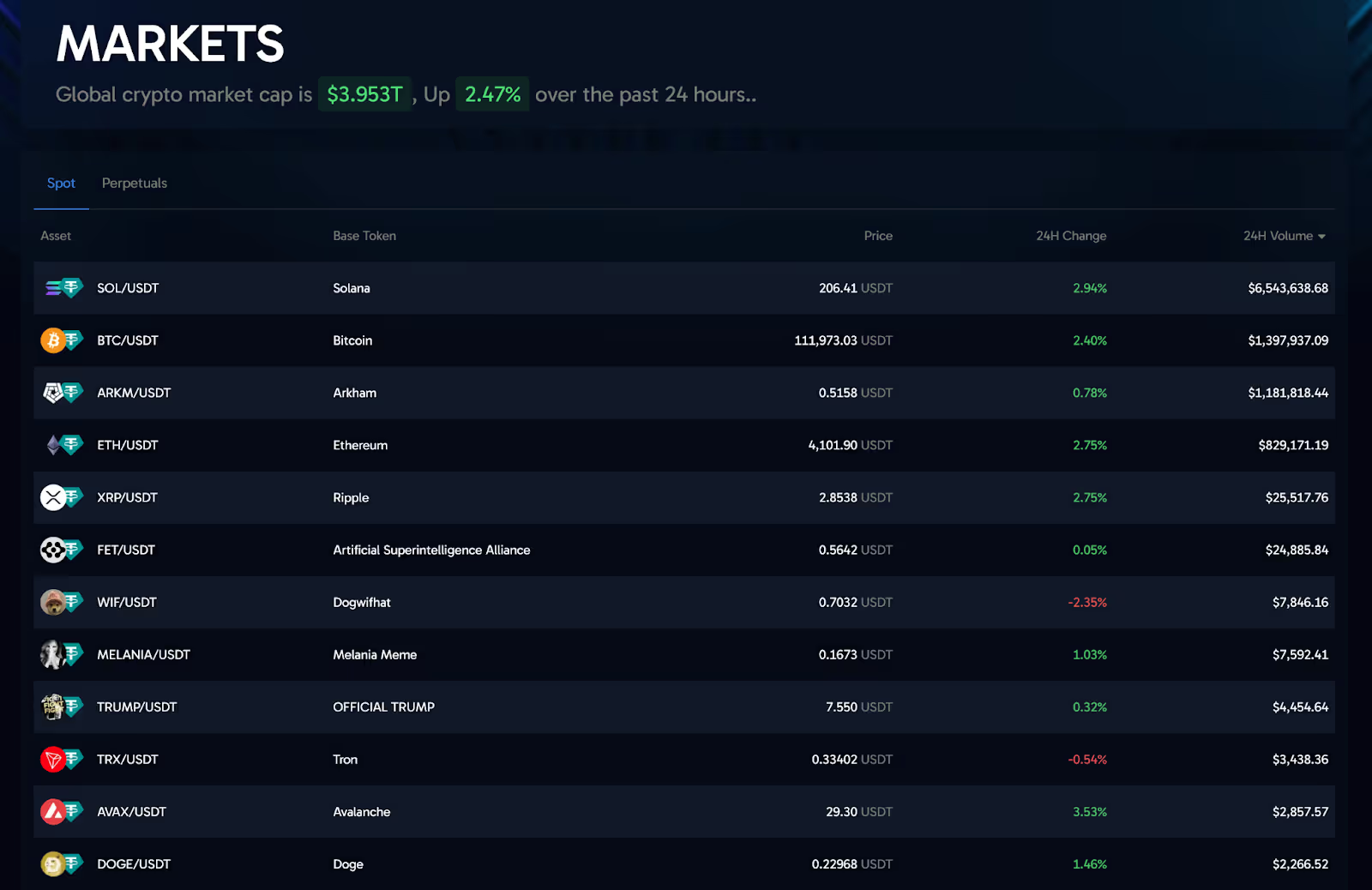
- Select a trading pair.
- Choose the cryptocurrency you wish to trade, for example, BTC/USDT.
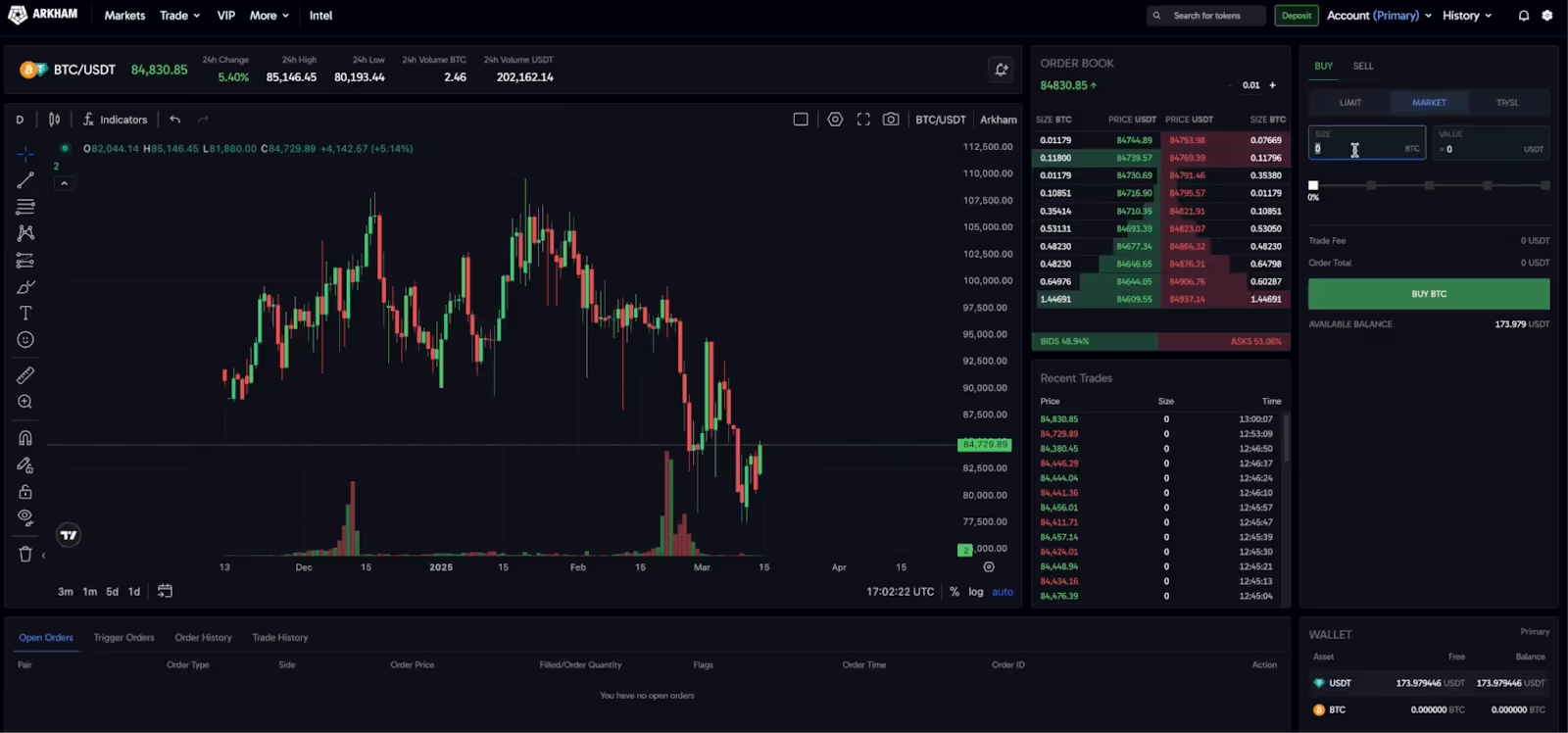
- Choose your action and order type.
- In the order panel, select the ‘BUY’ or ‘SELL’ tab.
- Select either a 'Limit' order to set a specific price or a 'Market' order to trade at the current price.
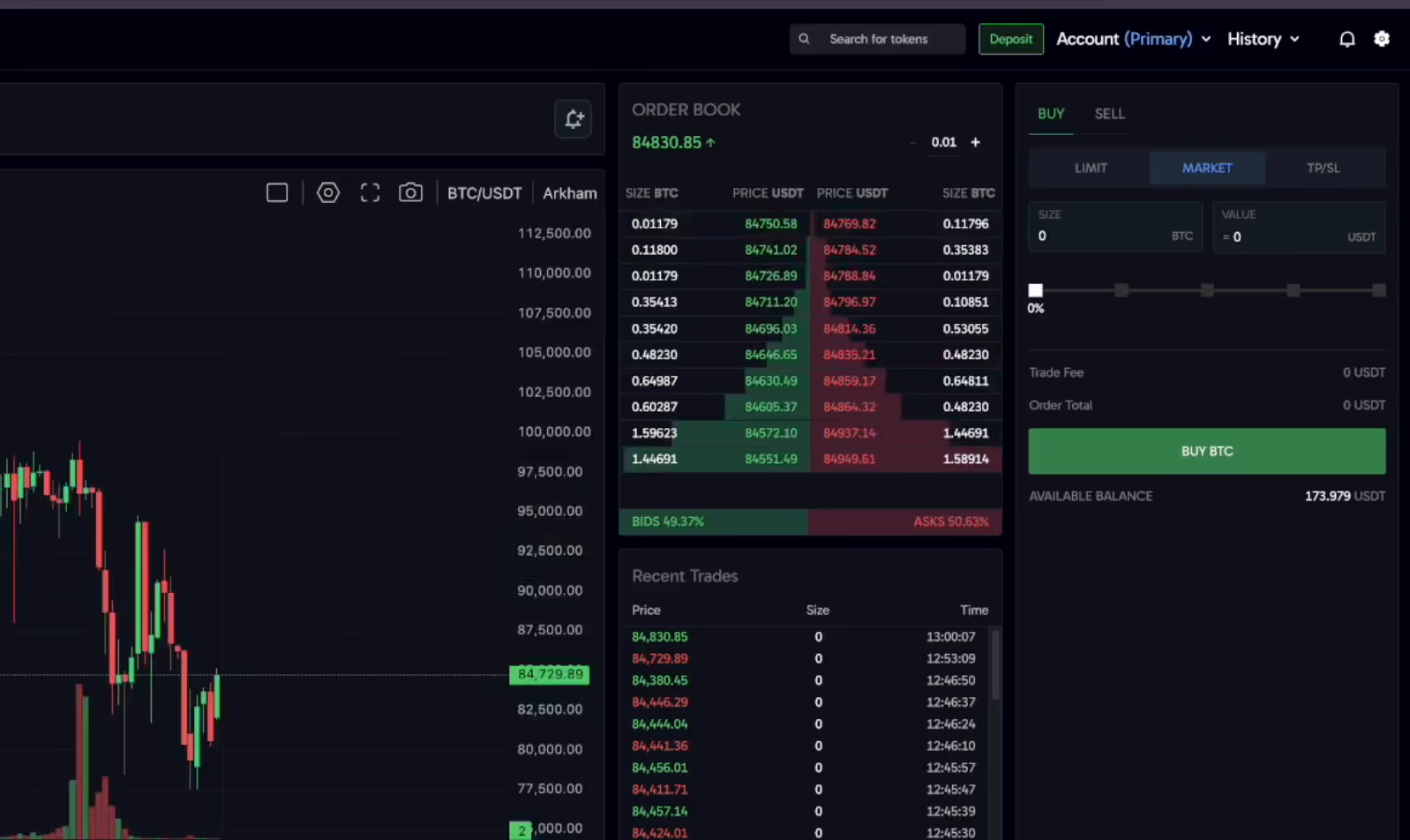
- Enter the order details.
- Input the amount of the asset you want to buy or sell. The panel will show you the total cost or proceeds of the trade.
- Place your order.
- Click the "BUY" or "SELL" button to confirm and place your order.
Once your order is placed, you can view its status in the "Open Orders" or "Order History" tab, which is typically located below the price chart. When your order is filled, the assets will be credited to your wallet balance.
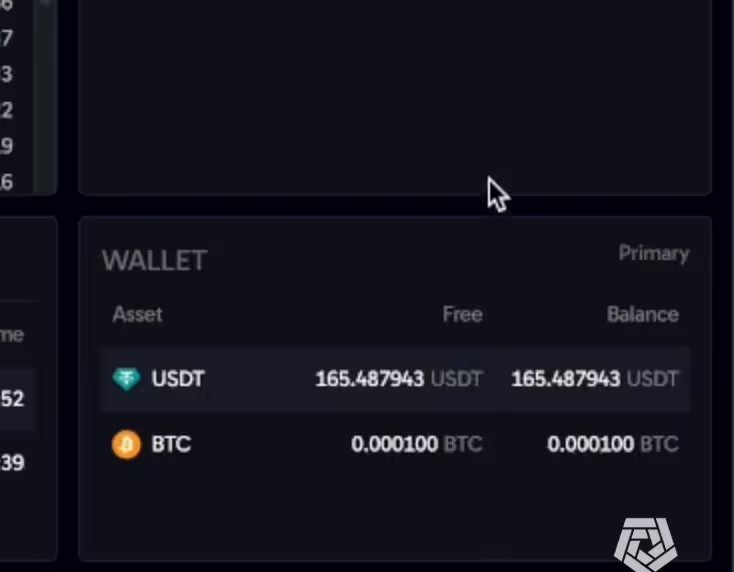
How to Close a Position (Sell an Asset)
In spot trading, "closing a position" simply means selling the asset you hold.
- Market Sell: The fastest way to sell your asset is by placing a market order. This sells your holdings immediately at the best available price.
- Take Profit (Limit Sell): To sell your asset once it reaches a specific price target, you can place a sell limit order. For instance, if you bought an asset and want to sell it for a profit, you would set a sell limit order at your desired higher price.
- Stop-Loss Order: This is a key risk management tool used to limit potential losses. A stop-loss is an order that triggers a sale if the asset's price drops to a specific level. You would set this sell order below your purchase price to protect against significant downturns.
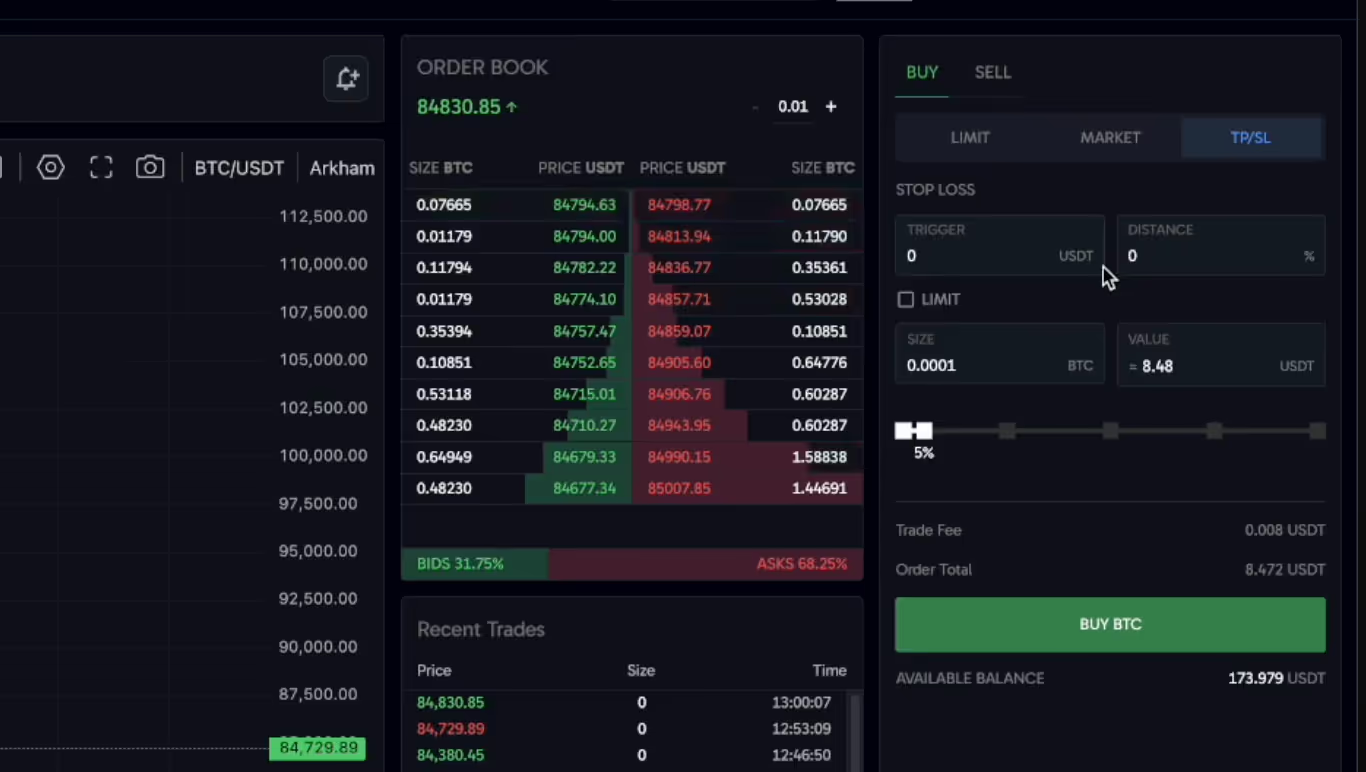





































































































































































































































.png)